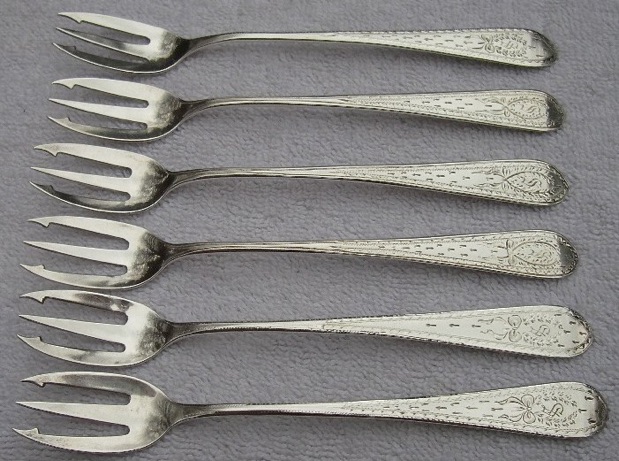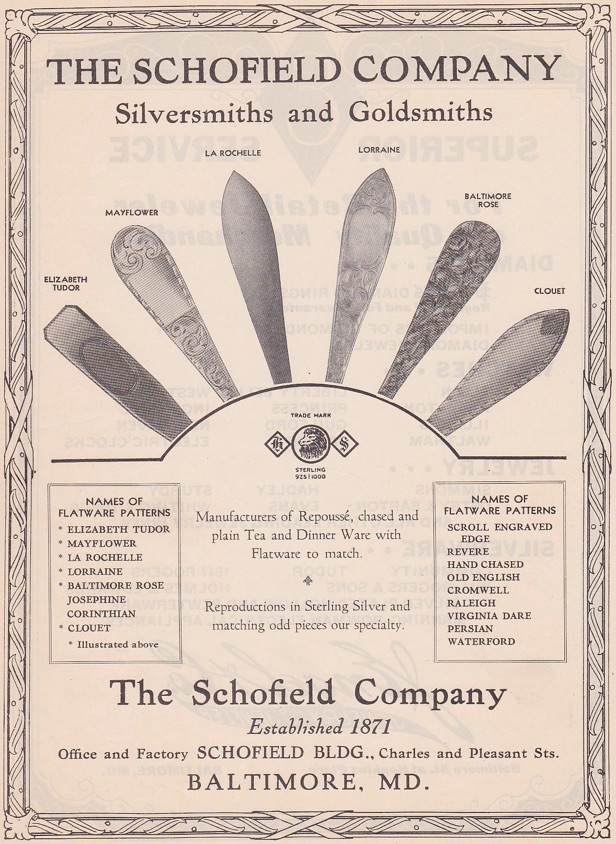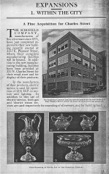




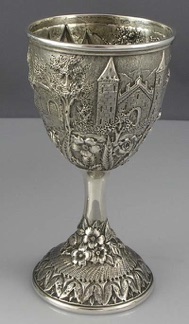
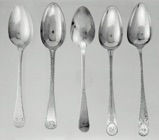
At the bottom of this page are links to the 1960‘s
Flatware Pamphlet, the 1929 and 1930 Catalogs
(or “Silver Books” as Schofield called them)
A History of The Schofield Company
Frank M. Schofield was born in 1873 in Providence RI. He apprenticed and worked at the Gorham Mfg. Co. for 8 years.
Frank Schofield arrived in Baltimore in June 1899.
Frank M. Schofield’s great, great grandfather John Schofield had been an English Silversmith
in London in the years 1740-1772. In 1871, Frank’s parents Allen and Ann (nee Bradley)
came to the United States from England, and settled in Providence RI.
(no known connection to a earlier , nineteenth century Baltimore Silversmith named Schofield)
Franks first job in Baltimore was with the Baltimore Sterling Silver Company. After working for BSSCo. for four years he started his own silversmithing company.
Baltimore Silversmiths Mfg. Co. was started in 1903 by
Frank Schofield on Pleasant Street in Baltimore.
It is interesting that for several years, the Polk Baltimore Directory does not list Schofield as management, even after striking out on his own.
The 1903 Polk Directory for Baltimore shows Schofield’s occupation as a Die Cutter
a left over from his time at Balt. Sterling Silver Co.

The Lexington address is a home address
1904, same address and profession.

1905, Die Cutter

1909, General Manager
Baltimore Silversmith’s Mnfg. Co.

I find it interesting that the Heer-Schofield name does not appear in the Polk Directory under silversmiths until 1912. In prior years it appeared in the directories as Balto. Silversmiths’ Mnfg. Co.
Here are some examples of Schofield Silver and some Stieff Silver pieces for comparison.
Below, note that both patterns have a cluster of three flowers and leaves at the top.
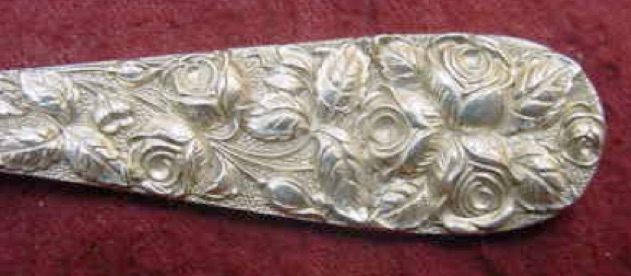


Middle is Stieff Rose, Top and Bottom are Schofield’s Baltimore Rose
Left is Stieff, Right is Schofield
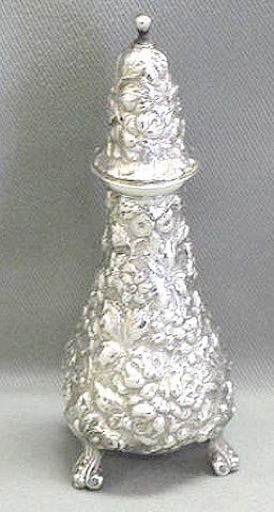
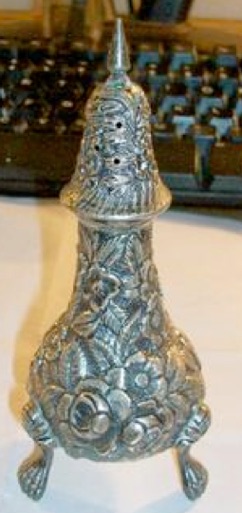
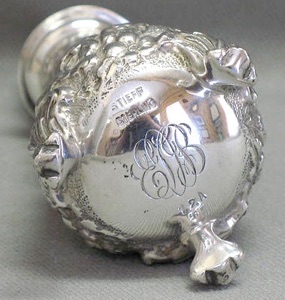
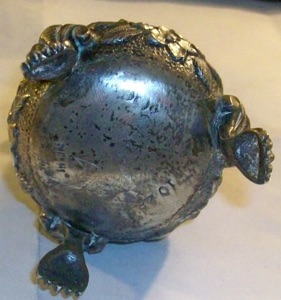
It is very common to find tables in the Mid-Atlantic region with Stieff, Schofield and Kirk silver mixed on the same table. As silver is passed down through the generations the mixes occur and can create a wonderful setting.
Baltimore Sun April 28, 1977
Article provided by James Stieff

the cost”.

This photo was at the top right of the page.

Many thanks to Jim and Charlie Stieff for their help in
remembering the Schofield Company.
Schofield Silver Hallmarks
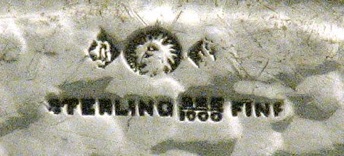
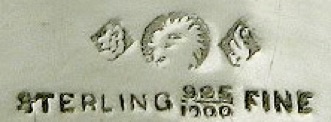
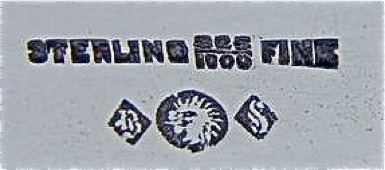
The Early 1903-1905 B S mark
for Baltimore Silversmith’s
1905, when Schofield joined with Herr
The B was changed to a H to stand for
HERR SCHOFIELD
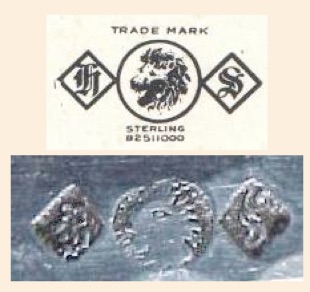
Often the lion mark is very light in
the stamping as seen above

The Schofield name from around 1930, the hallmarks were also in use.

In most examples of flatware seen today, polishing has resulted in just a
Diamond, Circle, Diamond instead of the Schofield mark.
Machine polishing will quickly reduce the mark to a blur.
From the June 7, 1967 Baltimore Sun
(The last section of this article is missing)

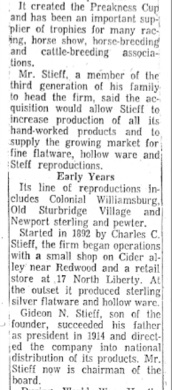
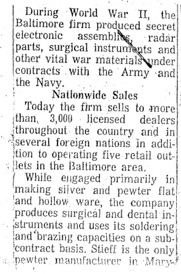
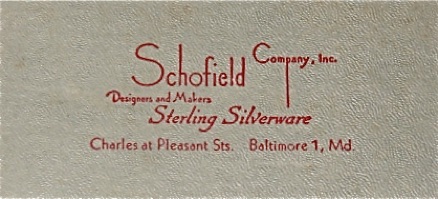
The Stieff Company bought Schofield Co. from
Oscar Caplan Co. in 1967. Oscar Caplan & Son are Baltimore area Jewelers. The Caplan’s had bought the company two years earlier in 1965 from Berthe Schofield.

To see the 1960’s
Schofield Pamphlet with FLATWARE PATTERNS
Click Below
Schofield Flatware Patterns Pamphlet
(from my personal collection)
(provided by the STIEFF family)
Schofield 1932 Flatware Price List
Click below for the 1927 flatware pattern
1957 Schofield Flatware Price List
fantastic Hollow ware
Click below for
Other pieces from the Schofield History including Non Silver
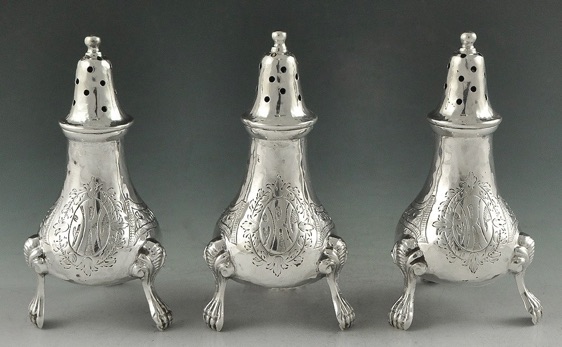
A trio of Schofield peppers circa 1910 3 & 1/8th inches tall
1905 brought the purchase of C. Klank & Sons*
(who had been in financial difficulty for sometime)
and later in the year, a financial partnership with
William Heer and the company becomes Heer-Schofield.
-
*The Klank & Sons name was retained until 1911 on some items. Most likely
-
*because they did not want to cut new dies for these items.
-
*

Mr. William Herr, is shown in the 1909 Polk directory President of Herr-Schofield.The listing here with K. Heer* (Kathryn Heer) as Secty. and Treasurer. Frank Schofield is listed as Manager.
*(The name of K. Heer is spelled incorrectly as Herr in the directory)
William Heer died in 1926, working in his garden. He was 76. His obit lists him as President of the Heer-Schofield Co. He was a Lutheran, and was buried in Druid Hill Cemetery.

In 1915 Heer-Schofield bought the tools, dies and name of Baltimore Silversmiths... Jenkins & Jenkins.**
Oddly, The 1921 Polk Directory for Baltimore show silversmiths Jenkins and Jenkins in business at 12 Clay St.
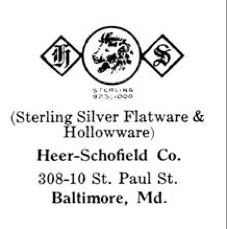
Above from the 1922 Jewelers Circular index of Silversmiths shows a St. Paul St. Address

Heer Schofield mark on a piece of
“Old Baltimore” pattern.
1928 the name was changed to
Frank M. Schofield Co.
In the June 1930 Power Pictorial, page 68 is this feature on the new Schofield Building at Pleasant & Charles St.
Click on the page to see full size.
1930 the name was again changed, to
The Schofield Company
Sometimes shown as simply “Schofield Company”
or Schofield Co.
Frank M. Schofield died June 27th, 1947
Frank was a member of Rotary, The Elks, St. Georges Society, the Masons and the
Scottish Rite Temple and was 73 years old when he died.
After Frank Schofield’s death, his wife Berthe*** ran the company until 1965. This was rare in a day when the silver business was a predominately male industry. Berthe herself was an accomplished silversmith, learning the trade after her marriage to Frank. She sold the Schofield Company to Oscar Caplan in 1965, but remained with the firm as a silversmith until 1967 when the Caplan’s sold Schofield to
The Stieff Company in 1967.
Berthe Schofield retired in 1967, and died on August 24th 1972 while attending a private luncheon at the Green Spring Valley Inn (Balt). She was 87 years old.
There were no survivors. She had called herself the world’s oldest female silversmith.
Berthe was the daughter of Circus performers with Ringling Brothers. A trapeze artist and bareback horse rider for 3 years in the circus, she met Frank Schofield while performing in Baltimore in a Vaudeville show at the Maryland Theater.
If you know anyone that was associated with Schofield or a distant member of the family, please contact me.
Schofield’s most famous pattern was Baltimore Rose



Notice the great detail on both the front and back of this piece which has the early BS mark.
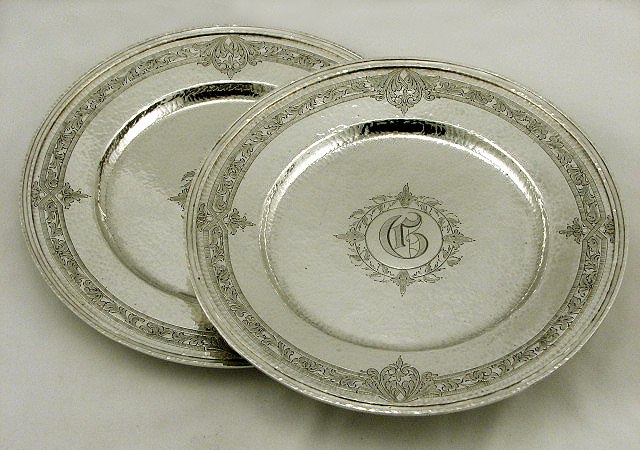
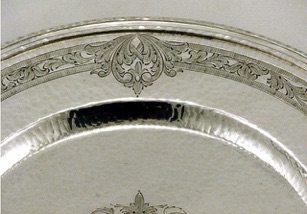
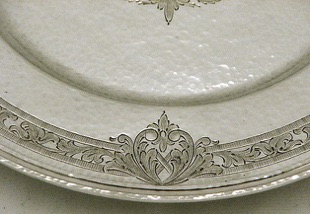
Sterling Plates from the 1903-1905 period
An early pattern of Schofield’s was Corinthian. The hallmarks shown are from the 1903-1905 period. The pattern does not appear in later 1920s catalogs. I do not know what the production dates of the pattern are.
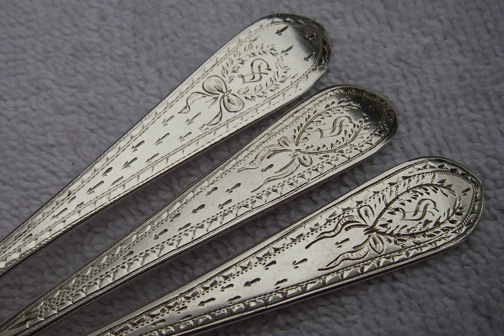
Corinthian is a hand engraved pattern so each fork is slightly different in patterning.
Notice the shape of the bows and it they vary.
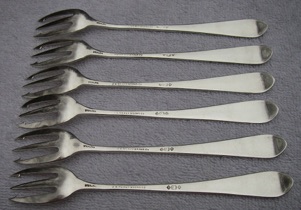
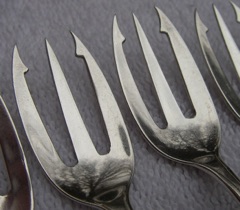

These oyster forks were sold by Baltimore Jeweler John W. Mealy & Sons Co.
The forks are 5.75 inches long. The B(lion)S mark is early...1903-05
